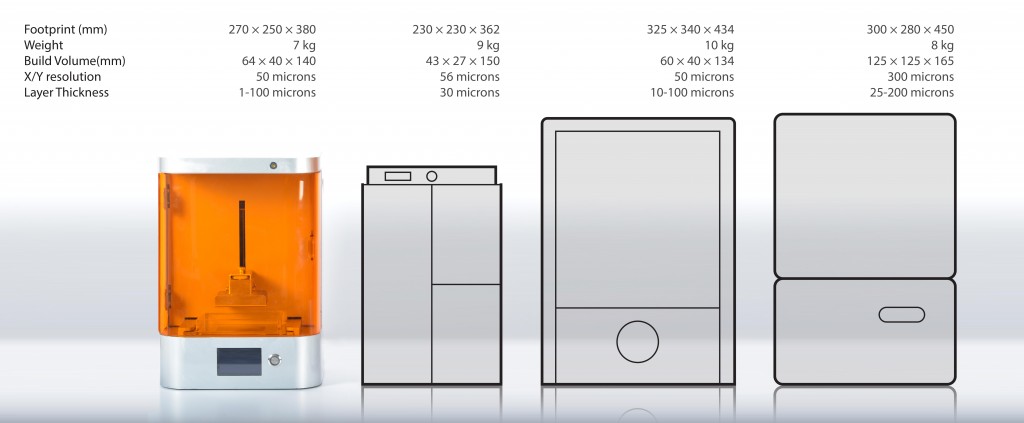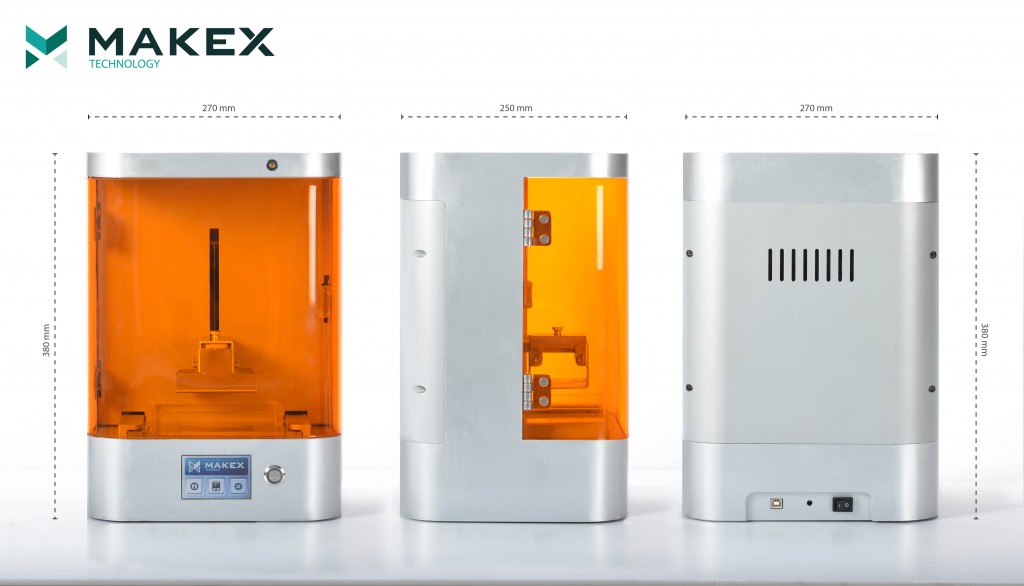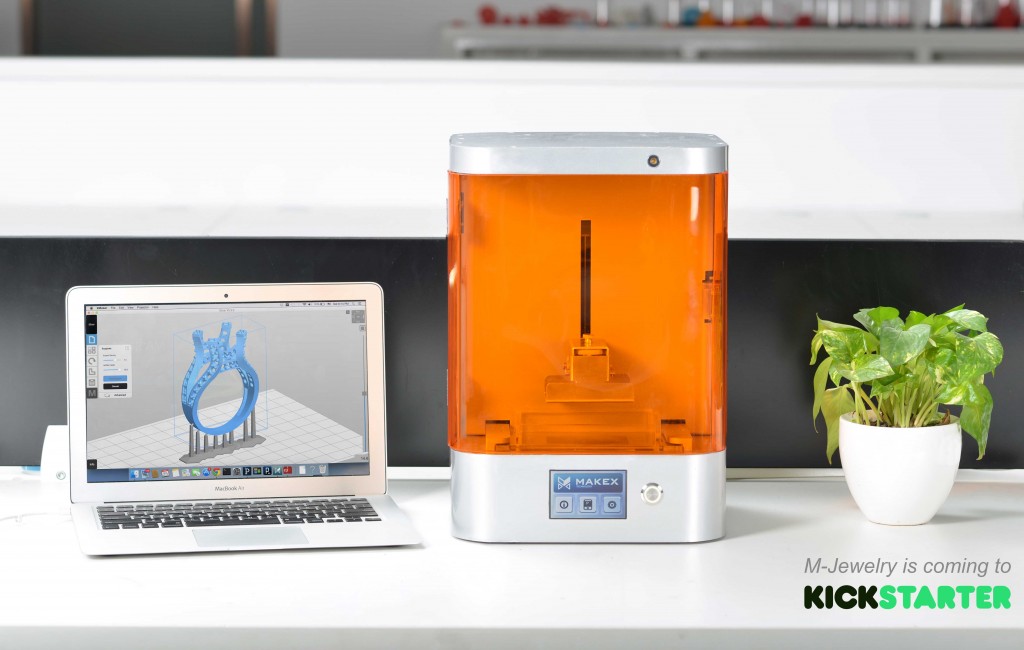After successfully entering the market with their first DLP 3D printer – the M-One – last year, Eastern China-based MAKEX is now kicking it up a notch by introducing the new M-Jewelery model, promising higher resolution, a smaller build volume, and longer lasting working hours than most other comparable 3D printers on the market.
The M-Jewelery – like its predecessor M-One – is a desktop 3D printer build to make high-resolution, small-sized objects. Like its predecessor, it is going to be launched through a Kickstart campaign set to go live soon. The M-One collected over $180.000 and hit the market at a price of about $2,400, with the external HD projector available for $400.
If the M-Jewelery will be able to stay within that price range, it would be more affordable than most immediately available, comparable machines, which include the market leading Form1+ and 3D Systems Projet 1200 (both based on pure SLA technology), as well as Autodesk’s Ember, which implements a similar SLA/DLP technology.
However, MAKEX promises that its M-Jewelery will be able to offer a higher resolution than all competitors, with layer thickness between 1 and 100 microns, and XY resolution set at 50 micron. This, with a 64 x 64 x 140 mm build volume, would be superior to the ProJet 1200 and comparable to Ember, in spite of a much smaller footprint.
Thanks to its UV-LED light system, MAKEX promises over 20,000 working hours, with the added convenience of wireless printing and a 3.5” touch screen. The 3D printer also comes with its own free XMaker V2.32 Multilanguage software and will be able to use most third party resins (MAKEX does not sell its own photopolymers at this point). The product ships from China – as the manufacturer is based in Ningbo, near Shanghai – but, today, this is hardly a limitation.
There is now a large range of DLP 3D printers on the market for professionals and the technology is seriously taking hold at a consumer/prosumer level, as well, with a growing number of sub-10,000 systems. The biggest limitation to DLP-based 3D printers is the model size (which remains very small), while their number one strength is resolution: the decreasing cost of 4K projectors will soon change that, and MAKEX 3D printers, which (like the Lumi Pocket) use an external projection system, will already be set up for the upgrade.





